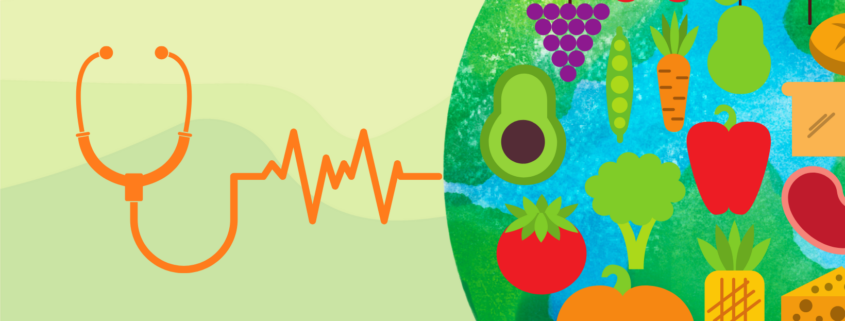Invest in Your Health and the Health of the Planet During April
Written by Lori Bumbaco, MS, RDN, CSO, LDN, Oncology Dietitian
Springtime season is upon us, therefore it’s a great time to check-in with yourself on how you can keep healthy and happy habits that create sustainable change. Do you have a routine or habit that involves produce?
Eat with personal nutrition and the environment in mind.
Buying foods in season and shopping locally, when possible, not only benefits the planet, but it also may help you keep food costs down. Enjoying more plant-based meals and snacks is another option. Try more meatless meals or substituting some or all the meat in recipes with plant-based proteins.
Consider plant-based eating. It’s good for us and good for the planet.
Plant-based eating is defined as eating meals that provide an abundance of fruit, vegetables, whole grains, nuts, and legumes with a modest amount of animal-based food.
Try to fill ½ your plate with vegetables and fruit, ¼ with whole grains, and ¼ from protein foods, mostly from plants. Beans and lentils are among the most nutritious sources of plant proteins.
Plan meals based on the foods you already have on hand.
- Look in the refrigerator, freezer and pantry for foods that need to be used up.
- Write a list of the ingredients you still need.
- Only buy the amount of perishable foods that can be eaten or frozen within a few days. This is especially true for foods, like fresh fruits, vegetables, meats, dairy products, and seafood.
A helpful resource is this recipe finder that allows you to insert the ingredients that you have available is called Supercook.
Stay nourished and save money.
When prices of food and other goods go up, buying healthful foods may not feel like a priority. Yet, many healthful foods are filling, cost less overall and help to manage or reduce your chances of developing certain chronic diseases. A little planning before you shop can go a long way in choosing foods that are affordable, satisfying and have a higher amount of nutrition.
Get creative with leftovers!
Transform meals into soups, salads, or sandwiches by cutting up leftover veggies and cooked meats. Try out these options:
- Use as a topping for salads or cooked grains like rice or pasta.
- Wrap in a tortilla or stuff into a pita for a satisfying sandwich.
- Combine to make soup, then enjoy or freeze for future use.
- Eat as a leftover meal later in the week.
- Or simply brown bag the leftovers for lunch
Eat a variety of foods from all food groups.
Fruits, vegetables, grains, protein foods and dairy all play a role in fueling our bodies. Choosing a variety of healthful foods is important, since foods can differ in the nutrients they provide. Eat foods in various forms including fresh, frozen, canned, and dried.
Other Ways to Nourish yourself and the planet:
- Be mindful of portion sizes. Choose smaller portions to stay within your calorie needs.
- Order smaller sizes of foods and drinks when eating away from home. Or, ask for a to-go container at the start of a meal.
- Learn how to properly store food, make new recipes with leftovers, and meal planning at home. Here is a helpful resource to get started: Save the Food
- Donate extra foods that are still safe to eat to a local food pantry or shelter.
- Consider composting.



